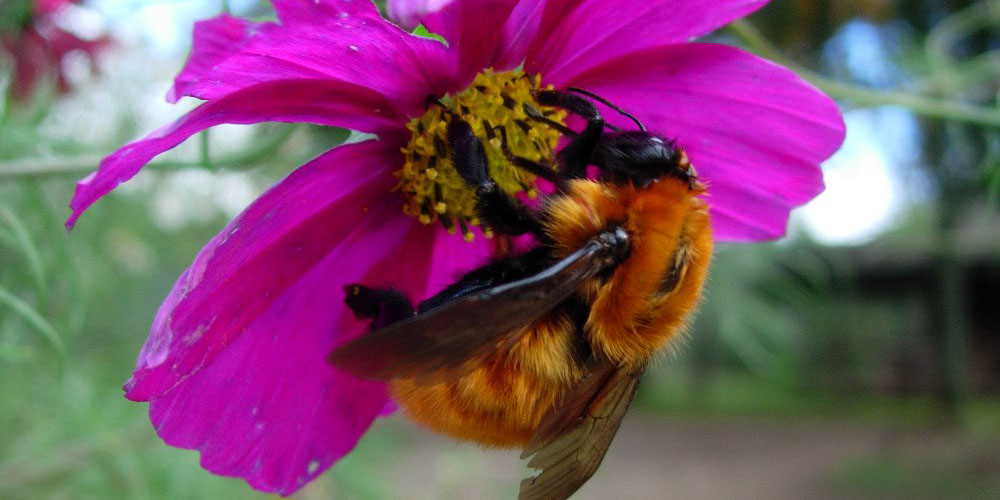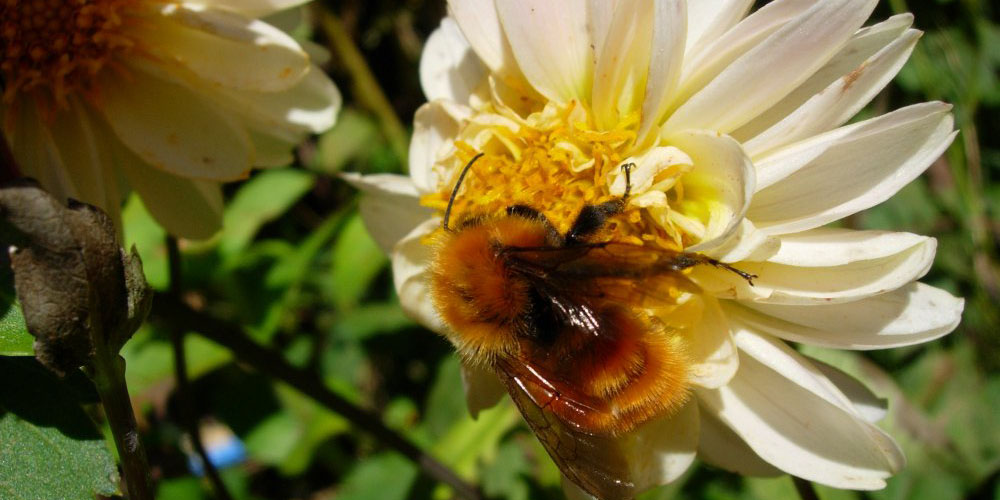For a long time, there was no awareness for invasive species in general. Europeans brought their familiar domestic animals and cultivated plants to the Americas, to Australia and all other countries they colonized. Nowadays, alien species continue to establish in new habitats. Though there may be more attention, global trade opens the door for migration of animals and plants, too. An example may be the Giant Resin Bee I saw last year for the first time. They are supposed to have arrived by wood transports from Asia. In Europe, they were first recorded in France, later also in Switzerland, Southwestern Germany and Italy. Apparently, commercial transports between these countries helped the spread being along the main connections between Marseilles and Turin.
Are more species always positive?
You may wonder why invasive species could be a bad thing. Doesn’t more species mean more biodiversity? Unfortunately, it is not that easy. Pollinator-plant networks, i.e. flowers, pollinators and their interactions, are in a balance that evolved for every single ecosystem. This balance is not static, one year a flood may have drowned bees that nested and overwintered in the ground. Another year a cold spring may delay the flowering of certain plants. But changes like this are buffered and the communities recover if they do not occur too often. On the other hand, there are bigger influences: large amounts of nutrients coming into calcareous grassland, for instance. Climate change. Or invasive species. These factors disturb the balance on the long run. It may readjust at a different level, but sometimes the new plants or animals are so dominant that the natives lose forever.
But bees are pollinators, and pollinators are good, right? This is not true, either. Not all pollinators do the job the right way. An example for this may be the situation of the world’s largest bumblebee, Bombus dahlbomii. I have already discussed this from a scientific and a personal point of view, but I want to add another aspect. This beautiful bumblebee decreased after introduction of the European buff-tailed bumblebee (B. terrestris) to Chile and is now found only in the extreme South of the country.

B. dahlbomii was once very common all over Central and South Chile.
The Magellanic Fuchsia and the giant bumblebee
In addition to the loss of this bumblebee itself, this influences also the native flora of Chile. In the South of the country, you can find large bushes of Chilco, a Fuchsia that grows only in the Southern cone of South America (Chile and Argentina). It is pollinated by hummingbirds, but also by B. dahlbomii. With the native bumblebee disappearing and the spread of the invasive species, these native flowers are at risk, too. Buff-tailed bumblebees are often nectar robbers. They have a very short tongue, too short for reaching the nectar at the ground of long flowers like the Chilco. But it has strong mandibles and chews holes into the flower to get there. By this, it not only takes a resource from the native pollinators, but also makes the flowers and plants more susceptible to fungal or viral diseases. By chewing this hole, often the ovary of the flowers is destroyed and it cannot produce any seed. This, on the long run, could be a risk also for this characteristic plant of Southern Chile.
Therefore, even if bees in general are positive because of their pollination activities, the picture is not black and white only. Also pollinators can do harm as this example shows. In a review, Dave Goulson defined the negative effects of alien bee species as follows:
- competition with native species for floral resources
- competition for nest sites
- co-introduction of natural enemies
- pollination of exotic weeds
- disruption of pollination of native plants
- In the case of buff-tailed bumblebees in Chile, we have evidence for three out of these five factors.
We do not know if there is competition for nesting sites or if exotic plants get more dominant by the pollination of this introduced species. But the damage is already big enough.
Invasive bees everywhere
Chile is not the only country where introduced bees cause problems. European honey bees are the first and maybe most invasive bee species as they are used worldwide in beekeeping. Using it also in Asia and transporting it back to Europe, the biggest threat for beekeepers began. With it, also associated viruses spread and now endanger not only managed honey bees, but also non-managed bees. In Panama, Africanized Honey Bees prevented native stingless bees from foraging on their preferred flowers. Native bees are deterred from foraging by introduced bumblebees. The introduced leafcutter bee, Megachile rotundata, in Australia feeds mainly on exotic weeds, helping their dispersal by a better seed set. In the USA, the Giant Resin Bee mentioned above competes for nesting sites with a native carpenter bee. We do not know yet if this happens also in Europe.
Sometimes, introduced species do not disturb the ecosystem that much to do real harm like with B. dahlbomii in Chile. Sometimes they are “neutral”. But this depends on the system a new species breaks in. Some ecosystems are more vulnerable than others. Australia has big awareness to alien species, more than Chile. Though both countries have a very unique flora and fauna. However, attention is often mostly on negative effects of economically important species, not that much on the native biodiversity as a whole. But species are not interchangeable. Pollinator does not equal pollinator. The example from the giant bumblebee and fuchsia in Chile may illustrate this. Preserving biodiversity means caring for every single species in its native habitat and ecosystem.



